15 Jun 2015
Summer Drinking Dangers
Summer is a time when many of us want to celebrate. Winter is over with. With more daylight hours of bright sun, the beach beckons. There are graduation parties, Fourth of July barbecues, and any-reason-at-all parties to attend. It’s a great time to get together with friends, enjoy the long days and have a good time. Unfortunately, a lot of these celebrations involve alcohol and all the dangers associated with it. Stay safe this summer and consider partying alcohol-free. If you are going to indulge, do so responsibly and safely.
Drinking Dangers During The Summer
Alcohol And The Heat
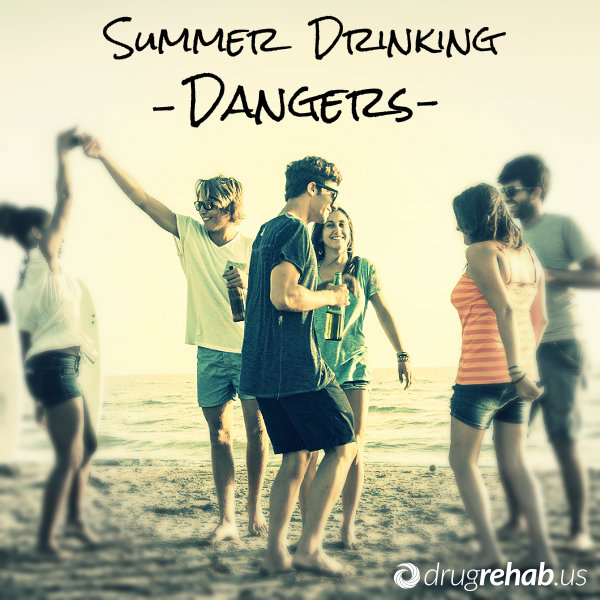 Many of the best summer parties are outdoor barbecues and picnics. It’s natural to want to drink at these events. You’re warm and relaxed and enjoying the company of your friends or family. Being outside while temperatures are high and the sun is shining can be a health hazard even without alcohol.Without proper precautions you may suffer from heat stroke, sunburn or dehydration. Alcohol can worsen these conditions and speed their onset.
Many of the best summer parties are outdoor barbecues and picnics. It’s natural to want to drink at these events. You’re warm and relaxed and enjoying the company of your friends or family. Being outside while temperatures are high and the sun is shining can be a health hazard even without alcohol.Without proper precautions you may suffer from heat stroke, sunburn or dehydration. Alcohol can worsen these conditions and speed their onset.
If you are planning to drink outside, do so in moderation and don’t forget to drink plenty of water as well. Use sunscreen and spend time in the shade to avoid too much sun exposure, avoid caffeinated drinks and stay cool with ice water.
Alcohol And The Water
What would a summer party be without a pool, lake or ocean-side beach? If you’re drinking near or on the water, the risk of harm is great. In fact, one out of every two deaths that occurs during water recreation is related to alcohol. While many people take drinking and driving very seriously, not everyone considers drinking and boating to be an issue. An intoxicated boat operator can cause terrible damage from accidents. Passengers drinking on boats may lose balance and fall overboard.
There are also the same hazards that involve drinking and being exposed to heat and the sun. On a boat it may not be possible to get drinkable water to stay hydrated, or to find relief from heat and sun. If you’ll be out on a boat, it’s best to refrain from drinking at all. If there will be drinking, bring along plenty of water, sunscreen and light clothing. Never let the operator of a boat drink.
Parties And Binge Drinking
Most people have lots of parties to attend over the summer, which gives ample opportunities to drink too much. When you’re having fun at a party it can be easy to forget how much you have had. Women should not have more than four drinks at once, or men more than five. Drinking more is considered binge drinking and is particularly dangerous. Binging can lead to car accidents, assaults and fights, unplanned pregnancies, increased blood pressure, heart disease and other serious problems.
Binge drinking can turn a fun party into a nightmare. Always keep track of what you are drinking at parties and set a limit. Drink one non-alcoholic beverage in between every alcoholic drink to keep yourself from getting out of control. It also helps to have a friend or partner monitor your intake and warn you if you are close to drinking too much.
Summer is a season full of sun and fun, and plenty of parties. Make the most of your summer vacation without an alcohol-related tragedy. Be careful, be aware of how much you and others drink and stay hydrated so that you can expect to enjoy your summer safely.
Read Our Other Posts With Helpful Tips & Tricks
Black Wednesday is the night before Thanksgiving and it is also known as the biggest bar night of the year. More than any other day during the winter holidays, this is the night during which many people cut loose and binge drink. The night before Thanksgiving is a night for the young, and it is young people who are most at risk for the consequences of overindulgence.
College students and 20-somethings are coming home for Thanksgiving, and while Thursday is for family, they use Wednesday night as a sort of reunion. Old friends get together to pack the bars and celebrate. If you are planning in taking part in a Black Wednesday event, plan ahead with a strategy of moderate drinking. Going overboard and binge drinking puts you at risk for a number of dangers, including injuries, alcohol poisoning, sexually transmitted diseases and assault.
Tips To Enjoy Black Wednesday Responsibly
Here are some ideas and tips to help you be responsible and to enjoy the night with friends:
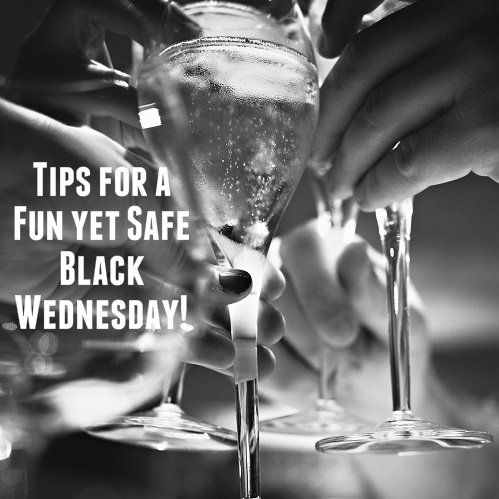 Skip the pre-party/pre-gaming – If you are over 35 and reading this, you may be confused. What’s a pre-party? Yes, young people actually take time to drink before a drinking event. The pre-party is a small gathering, usually at one person’s home, to get lightly buzzed before the main event. This is irresponsible drinking at its worst. Don’t do it. By all means get together with a few close friends ahead of bar time, but have coffee, soda, or mocktails instead of alcohol.
Skip the pre-party/pre-gaming – If you are over 35 and reading this, you may be confused. What’s a pre-party? Yes, young people actually take time to drink before a drinking event. The pre-party is a small gathering, usually at one person’s home, to get lightly buzzed before the main event. This is irresponsible drinking at its worst. Don’t do it. By all means get together with a few close friends ahead of bar time, but have coffee, soda, or mocktails instead of alcohol.
- Eat – Of course you want to look your best for a reunion with old friends, but starving yourself ahead of time is not the way to do it. You need to have food in your stomach or one drink could wipe you out for the night.
- Have a way to get home – To be safe, make sure you know well in advance how you’ll get home. Select a designated driver or plan to take a cab or public transportation home. If you’re going with the latter, make sure you have a friend to come home with you so that you’re not traveling alone.
- Set a limit – Set a limit for how many drinks you will have at the bar or party and be firm about it. A specific goal is important because if you go into the event with the vague goal of not getting too drunk, it will be too easy to go past the point of no return.
- Share your limit – Tell a trusted friend who will be heading out with you that you have a limit and that you want her to help keep you accountable. If your goal is a secret, it’s easy to stretch it further. A friend will help keep you in check. Offer to do the same for her.
- Alternate alcohol with non-alcohol – Whatever your set limit is, have a non-alcoholic drink in between each alcoholic one. This will force you to slow down and prevent you from getting too drunk. Once you have reached your limit, keep a non-alcoholic drink in your hand for the rest of the night. It will help you resist the urge to get another drink.
Always Plan Your Night Of Drinking In Advance
Drinking the night before Thanksgiving can be a fun way to celebrate and catch up with old friends, but it can easily get out of control. If you have a plan set in advance and follow these tips, you can enjoy the night, be safe and have no regrets the next morning.
Planning Ahead Of Time Can Save Your Night…And You Or Your Friend’s Life
02 Oct 2014
What Hangovers Can Tell You About Your Drinking
Drinking is a risky behavior. You can have an accident. You can drink too much, black out and forget what happened the night before. You can end up saying things you regret. And, of course, most of us have experienced the dreaded morning-after hangover. If you drink responsibly and moderately, you don’t have to worry about these things.
Types Of Hangovers And What They Say About You And Your Drinking
If you are questioning whether your drinking habits are risky or getting out of control, let your hangovers be your guide; they can be illuminating.
The Occasional, Regrettable Hangover
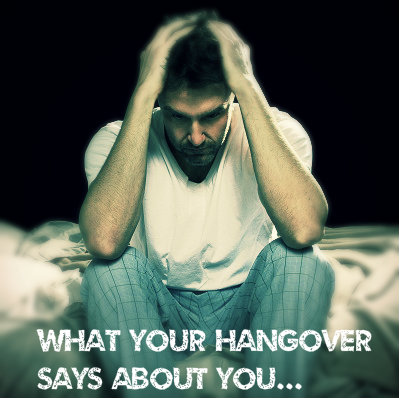 An occasional hangover is not that unusual for the moderate social drinker. We all have those regrettable moments when we go one drink too far. The next morning you wake up with your tongue stuck to the roof of your mouth, the room spinning and your head pounding. You try to remember what went wrong the night before and then slug back water in a desperate attempt to feel normal again.
An occasional hangover is not that unusual for the moderate social drinker. We all have those regrettable moments when we go one drink too far. The next morning you wake up with your tongue stuck to the roof of your mouth, the room spinning and your head pounding. You try to remember what went wrong the night before and then slug back water in a desperate attempt to feel normal again.
This type of hangover, if it occurs once or twice a year, is probably not a big deal. And it is not likely to be indicative of a drinking problem. It’s normal to make this mistake and only if you never drink or you rule your drinking with an iron fist will you never have a hangover.
The Slight, But Constant Hangover
A hangover can come in a range of severities. For most normal drinkers, the worst hangovers are rare because we learn our lessons, at least for a while. The normal reaction to a bad hangover is to avoid drinking too much in the future. But what if you drink regularly and wake up most mornings with mild symptoms? Maybe you have a slight headache or you just feel unrested, like you didn’t sleep well.
This mild kind of hangover, occurring several times a week, is a sign that you are developing a drinking problem. If you truly drink moderately, meaning one to two drinks at a time no more than a few nights a week, you shouldn’t feel bad in the mornings. These little hangovers are telling you that you are drinking too much and you are drinking too often. Just because you aren’t experiencing a full-blown morning-after event doesn’t mean you aren’t abusing alcohol. Slow down and cut back now before it gets worse.
The “I’ll Never Feel This Way Again” Hangover
I’ll never drink like that again! Have you ever said this before? Most of us have, which is fine if you act on that sentiment. If you find yourself saying or thinking this, but tack on an “until next weekend,” you have a problem. Not adjusting your behavior in response to a bad hangover is not normal and it indicates that you are drinking too much too often. Try to cut back and if you find that you are struggling to do so, you may need some professional help or a support group.
The Hair Of The Dog Hangover
What if you have regular hangovers and to get through them you have a little morning drink? This is a sign that you are already on a dangerous path. If you need a drink to help you feel better in the morning, you could be well on your way to alcoholism. Stop drinking now and turn to professionals for help. If you’re not sure where to turn, start with a trusted friend or family member who cares about you. You need support now more than ever.
Listen To What Your Body Is Telling You And Get Alcohol Abuse Help
Hangovers are no fun and how often and how badly you have them, and how you respond to them, can tell you a lot about your drinking and whether it’s problematic. Listen to what your body is telling you and adjust your drinking behaviors or get the help you need.
Learn More – Moderation vs. Abstinence: Which Works Best For Problem Drinkers?
07 Jul 2014
Are Binge Drinkers Addicted To Alcohol?
Binge drinking is a term used to describe heavy drinking. According to the National Institute on Alcohol Abuse and Alcoholism (NIAAA), binge drinking means having enough drinks in a two hour period to achieve a blood alcohol concentration level of 0.08, a level at which a person is considered to be intoxicated. Binge drinking is increasingly common, but does it make a person an alcoholic or addicted to alcohol? The answer is not so simple.
The Risks Of Binge Drinking
For women, binge drinking typically means having four or more drinks in a two-hour period. For men, it means having five or more drinks. Consuming this much alcohol in one sitting, or more, is detrimental to your health. And if you drink this way, you are not alone. One in every six adults in the U.S. binges four times a month. Each binge includes eight drinks on average. This is a lot of alcohol.
Binge drinking can lead to a number of health problems, not least of which is dependence on alcohol, or alcoholism. It can also cause:
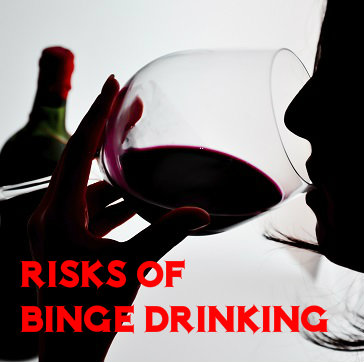 liver disease
liver disease- high blood pressure
- heart attack
- stroke
- neurological damage
- complications if you have diabetes
Binge drinking also leads to:
- accidents and injuries
- alcohol poisoning
- fetal alcohol syndrome
- unintended pregnancies
- problems with relationships
- strain on career and finances
What Is Alcoholism?
So does binge drinking make you an alcoholic? Not necessarily. Addictive disorders are most often diagnosed based on the Diagnostic and Statistical Manual of Mental Disorders. The fifth version of this manual recently came out with new criteria for alcohol addiction. The fourth edition listed alcohol abuse and alcohol dependence (alcoholism) as two separate disorders. The fifth edition merged the two into one disorder: alcohol use disorder. A person can be diagnosed as having a mild, moderate or severe case of alcohol use disorder.
According to the fifth edition, to have an alcohol use disorder you must have two of the eleven symptoms listed in the manual. Having two or three symptoms represents a mild case. Binge drinking is not listed as a symptom, but several of the symptoms could result from binge drinking. For instance, one symptom is drinking more than you intended to on a particular occasion. Many binge drinkers could claim doing this. Another symptom is trying to drink less, but failing. Again, this can happen with binge drinking.
There are several other symptoms that could go hand-in-hand with binge drinking. This means that if you binge drink and end up having two of these symptoms, you could be diagnosed as having mild alcohol use disorder. If the risks of binge drinking are not enough to make you want to slow down, maybe this fact is.
Stopping Binge Drinking
Moderate drinking is not harmful to your health, unless you have specific conditions that are exacerbated by alcohol. If you binge drink regularly, consider cutting back to moderate drinking levels. If you don’t, you put yourself at risk for a number of health problems. Not least of these is alcohol use disorder. If you could qualify for a diagnosis of mild now, you are on the path to having moderate or severe alcohol use disorder later.
Being a moderate drinker means having no more than three drinks per day and seven per week if you are a woman. If you are a man, have no more than four drinks per day and 14 in a week. Cutting back is important for your health, but if you find you can’t, you may need to get help. Rely on friends and family to support you in drinking less, or find a support group to join. You don’t need to be a full-blown alcoholic to ask for help. Doing so now could save you disastrous consequences in the future.
If You Or Someone You Love Needs Help Quitting Drinking – Call Us Now – We Will Get You On The Path To Happy And Healthy Sobriety!
Alcohol consumption is illegal for all teenagers in the U.S. Despite this fact, significant numbers of teenagers drink, and therefore expose themselves to a range of health risks and social problems of alcohol. In a study published in October 2013 in the Journal of Child & Adolescent Substance Abuse, researchers from the Pacific Institute for Research and Evaluation looked at the way young, alcohol-consuming teenagers alter their drinking patterns as they grow older. These researchers found that most young teens manage to avoid any increases in alcohol consumption over time, while a small but significant minority of young teens experience either moderate or heavy increases in their consumption levels.
Alcohol Consumption Rates In Young Teens
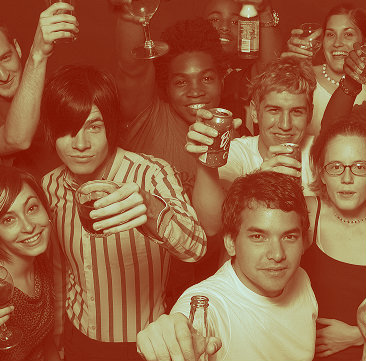 In collaboration with the University of Michigan, the National Institute on Drug Abuse tracks American teenagers’ level of involvement in substance use with an annual survey project called Monitoring the Future. According to results compiled from the 2012 version of this project, roughly 16 percent of all U.S. eighth graders consume alcohol at least once monthly. This rate follows a downward trend that first began in the mid-1990s.
In collaboration with the University of Michigan, the National Institute on Drug Abuse tracks American teenagers’ level of involvement in substance use with an annual survey project called Monitoring the Future. According to results compiled from the 2012 version of this project, roughly 16 percent of all U.S. eighth graders consume alcohol at least once monthly. This rate follows a downward trend that first began in the mid-1990s.
Figures gathered from Monitoring the Future also indicate that roughly 6 to 7 percent of all eighth graders in the U.S. participate in a dangerous form of consumption called binge drinking in any given two-week period. Binge drinking gets its name because participants binge on enough alcohol (typically, five drinks or more for boys and four drinks or more for girls) to become legally drunk in two hours or less.
Risky Behaviors Associated With Early Alcohol Consumption
Alcohol consumption has a strongly negative impact on teenagers, especially young teenagers below the age of 14, the National Institute on Alcohol Abuse and Alcoholism reports. Examples of the risks associated with drinking at this early age include higher rates of involvement in car crashes and other accidents, higher risks for homicide and suicide, higher rates for victimization in violent criminal acts such as assaults and rapes, increased chances of participation in disruptive conduct while in school, increased chances for poor academic results, an earlier onset of participation in sexual activity and increased risks for the practice of unsafe sex.
In addition, teen boys and girls who drink before the age of 14 tend to participate in binge drinking rather than moderate alcohol consumption. Critically, they also become alcoholics fully four times more frequently than people who don’t drink until they reach legal age.
Changes In Consumption Over Time
In the study published in the Journal of Child & Adolescent Substance Abuse, the Pacific Institute researchers looked at the ways in which young teenagers change their alcohol intake patterns as they grow up. The researchers also looked at the factors that help predict an increase in alcohol consumption among young teens. They undertook their project because only a few prior research groups had examined drinking patterns in this particular age group. All told, the study included 5,903 middle school teens. The researchers began tracking these teens when they were sixth graders and continued to track them through the eighth grade.
After completing the study’s primary phase, the researchers found that there are four emerging patterns of alcohol intake in middle school teenagers. Slightly less than 50 percent of all teens in this age group avoid drinking altogether or only drink on fairly rare occasion. Slightly more than 29 percent of all middle school teens initiate experimental alcohol use and continue to drink, but only increase their consumption levels to a minor extent over time. Fifteen percent of all middle schoolers start drinking significantly earlier than their alcohol-using peers, but still manage to keep their intake levels low. Slightly more than 6 percent of all children in this age group initiate alcohol use, and then fairly quickly begin consuming enough alcohol to rank as “heavy” drinkers.
Underlying Factors Of Teen Alcohol Use
The researchers concluded that the single biggest factor in forming any given young teen’s alcohol use pattern is his or her level of belief in the ability to control his or her rate of alcohol consumption. Young teens who believe they can control their drinking-related behaviors tend to do so, while those who don’t believe they can control their drinking tend to experience a spike in intake. Other factors identified as contributors to a young teenager’s alcohol intake pattern include the relative level of peer pressure he or she experiences for or against drinking, as well as the relative level of positive or negative feelings he or she has toward the effects and benefits of drinking.
Learn More About Detoxing From Alcohol And Gain Your Life Back!
Stories appear in the news on nearly a daily basis describing a trendy new drug, the explosion of a meth house, overdose deaths or some other tragic event due to drugs, alcohol and addiction. It can be hard to take away the real facts from these stories. To know what is really happening in the U.S. when it comes to drug and alcohol abuse, statistics and solid facts are helpful.
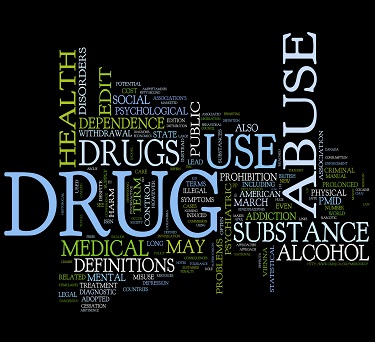 Every year the National Survey on Drug Use and Health (NSDUH) questions a random selection of close to 70,000 Americans. All participants are 12 years and older and the purpose of the survey is to estimate how many Americans are using various illicit drugs, prescription drugs, alcohol and tobacco, and how they are using them. To get accurate data in this way helps with the implementation of preventive programs and treatment offerings for substance abusers. The study is conducted every year so that trends can be established.
Every year the National Survey on Drug Use and Health (NSDUH) questions a random selection of close to 70,000 Americans. All participants are 12 years and older and the purpose of the survey is to estimate how many Americans are using various illicit drugs, prescription drugs, alcohol and tobacco, and how they are using them. To get accurate data in this way helps with the implementation of preventive programs and treatment offerings for substance abusers. The study is conducted every year so that trends can be established.
The most recent NSDUH provides data for 2012. The latest results of the survey give a picture of drug and alcohol use in the U.S. that some may find surprising. Trends in the use of specific drugs show which are decreasing and which are exploding in popularity. The results also show trends in the ages of drug users, the prevalence of binge drinking and attitudes toward smoking.
Binge Drinking On The Rise
Binge drinking is on the rise and is considered a type of substance abuse. The Centers for Disease Control and Prevention define binge drinking as having five or more drinks within a two-hour period for men, and four or more for women. This level and rate of drinking elevates a person’s blood-alcohol content to 0.08.
According to the NSDUH data, more than half of Americans are drinking. That represents over 130 million people. Of those, one quarter, or around 60 million people, binge drink. Not only does binge drinking have serious health consequences over the long term, it can also result in immediate problems, such as drunk driving and accidents.
Spike In Heroin Use
Methamphetamine, commonly called crystal meth, speed, or just meth, is a dangerous, destructive and highly addictive drug. Not only does the drug destroy lives through addiction and health problems, the way in which much of it is made has harmed or killed people. Meth is a drug that can be made with household chemicals and drugstore buys. For this reason, a decade ago, meth labs cropped up around the country and came with poisoning fumes and accidental explosions. The good news from the survey is that use of meth is decreasing. Nearly 731,000 people used meth in 2006, and for 2012 the number dropped to 440,000.
The bad news is that use of heroin is rapidly rising. Another very serious drug, heroin is extremely addictive and has the potential to cause an overdose on the first try. The number of Americans using heroin, according to NSDUH, doubled between 2007 and 2012, from 373,000 to 669,000.
Drug Use Among Baby Boomers Is Increasing
Drug use among the baby boomer generation is on the rise. Compared to a decade ago, the number of adults between the ages of 50 and 64 using drugs doubled. Among those aged 55 to 59, the rate tripled. Americans in this age group were young during the 1960s when drug use exploded. As they age, these people are still using drugs to some extent. They are using more than the generation before them ever did.
Having accurate information from the NSDUH is crucial in developing policies, substance abuse prevention plans and treatments for addicts and abusers. The survey information provides an accurate glimpse of what Americans were doing in 2012 and also how behaviors are changing. Some of the news was good: the number of teenagers smoking cigarettes has been cut in half over the last 10 years. Some news, though, like the explosion of heroin use, is less promising.
08 Aug 2013
Americans Are Still Drinking Too Much, USDA Says
Binge drinking is generally thought of as part of the college scene. When heavy drinking is mentioned, images often relate to college campuses and partying on the weekend. It is a behavior associated with young adults breaking free of the strict rules enforced at home by their parents.
Read More
On May 14, 1988, a drunk driver going the wrong way on an interstate highway just outside Carrollton, Kentucky, collided head on with a school bus full of children. In total, 24 children and three adults were killed in this horrific accident, making it the most deadly alcohol-related automobile crash in U.S. history. In commemoration of the 25th anniversary of this tragic event, on May 14of this year the National Transportation Safety Board issued a new report urging all 50 states to lower the legal limit of intoxication for anyone operating a motor vehicle from .08 blood-alcohol content to .05, a standard that is already in place in about 100 other countries around the world.
Referring to the approximately 10,000 deaths that occur in the United States each year in alcohol-related automobile accidents as “a national epidemic,” NTSB Chairman Deborah Hersman expressed her organization’s concern that the ongoing campaign to reduce drunken driving fatalities had reached a point of diminishing returns. The NTSB’s recommendation that blood-alcohol level restrictions for drivers be tightened is in accordance with the latest scientific findings, which show that a person with a BAC of .05 will experience “reduced coordination, reduced ability to track moving objects, difficulty steering, and reduced response to emergency driving situations” (quoted from a chart published by the National Highway Traffic Safety Administration). The NTSB estimates that if this new standard were universally adopted, it could lead to a 10 percent annual decrease in the number of people killed by drunken drivers, and it is urging the National Highway Traffic Safety Administration to offer financial incentives to any state that will agree to make the switch from .08 to .05.
Sensible Caution or Mindless Prohibition?
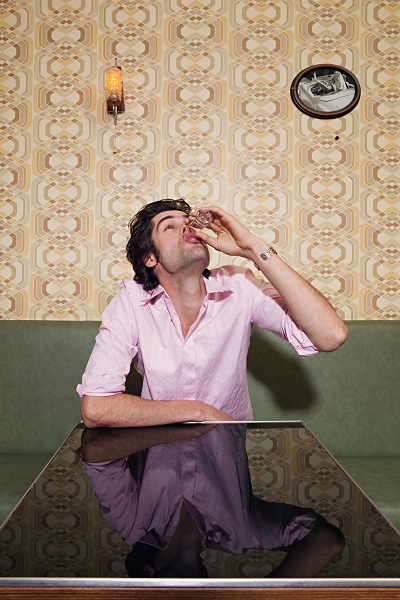 As recently as the early 1980s, people who had been drinking were legally allowed to get behind the wheel of an automobile in many states as long as their blood-alcohol content did not rise above .15. But in response to rising public and political awareness of the true costs of drunk driving, legal standards began to evolve and by 2004 all 50 states had adopted the far more stringent .08 standard that still reigns supreme today. Since the heyday of .15, annual casualties from alcohol-related automobile accidents have dropped from 20,000 per year to just under 10,000, but drunken driving still accounts for about one-third of all highway deaths in the United States, more than any other single factor. Over the years, legal penalties for driving under the influence have become more severe in concurrence with the tightening of the BAC, and bars, clubs, and restaurants by all accounts have become more responsible about serving alcohol to customers who may be intoxicated. Nevertheless, drunk driving has remained stubbornly and discouragingly prevalent, and its consequences have continued to leave a long trail of broken bodies lying in the wrecked and smoldering ruins of crashed automobiles each and every year.
As recently as the early 1980s, people who had been drinking were legally allowed to get behind the wheel of an automobile in many states as long as their blood-alcohol content did not rise above .15. But in response to rising public and political awareness of the true costs of drunk driving, legal standards began to evolve and by 2004 all 50 states had adopted the far more stringent .08 standard that still reigns supreme today. Since the heyday of .15, annual casualties from alcohol-related automobile accidents have dropped from 20,000 per year to just under 10,000, but drunken driving still accounts for about one-third of all highway deaths in the United States, more than any other single factor. Over the years, legal penalties for driving under the influence have become more severe in concurrence with the tightening of the BAC, and bars, clubs, and restaurants by all accounts have become more responsible about serving alcohol to customers who may be intoxicated. Nevertheless, drunk driving has remained stubbornly and discouragingly prevalent, and its consequences have continued to leave a long trail of broken bodies lying in the wrecked and smoldering ruins of crashed automobiles each and every year.
Not surprisingly, the alcohol and hospitality industries have responded to the .05 recommendation negatively, calling it unnecessary, excessive, and bad for the economy. Others have pointed out that current laws already allow police officers to arrest drivers who appear intoxicated regardless of what their blood-alcohol levels might be, and they claim that the only people who will be taken into custody under these new restrictions will be those with BACs of .05 who show no actual signs of being impaired. Even some people involved in the fight against drunk driving have expressed skepticism about the idea of reducing the allowable BAC, believing that it will create a backlash that may ultimately hurt the anti-drunk driving cause by linking it to draconian laws that will not be popular with most people. Skeptics also argue that this new law would be all but unenforceable, since police would be expected to somehow know intuitively that drivers had reached the legal limit for intoxication and needed to be pulled over, even though in most cases their driving performances would appear to fall entirely within the range of normal.
The Power of Prevention
Some of these criticisms could very well prove to be legitimate, if the new standards are eventually adopted. However, government regulatory and safety agencies can only base their policies and recommendation for change on what the latest research shows, and in this case the science is clear: at .05 BAC the reflexes and perceptions of human beings are altered dramatically, and regardless of whether a person shows obvious signs of drunkenness, their ability to drive will be impaired if they have been drinking enough to reach this level of intoxification, thereby putting themselves, their passengers, and everyone else on the roadways at risk. While there may indeed be some backlash in the short-term against a move to .05, if there is any chance at all that such a move will discourage drinking and driving then this new proposal by the NTSB clearly has merit.
During the time when BAC driving requirements were being progressively tightened, from approximately 1980 through 2004, drunken driving-related casualty levels declined significantly and no one can reasonably argue that this is just a coincidence. Based on past precedent it appears very likely that these new recommendations will in fact be adopted at some point, and if and when that happens we can only hope that from then on fewer families will be forced to confront the premature loss of cherished loved ones as a result of a tragic—and entirely preventable—alcohol-fueled automobile crash.


